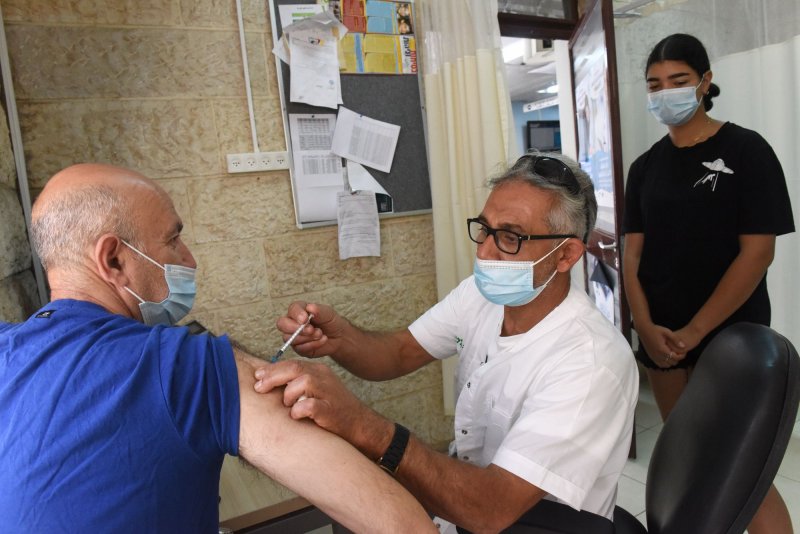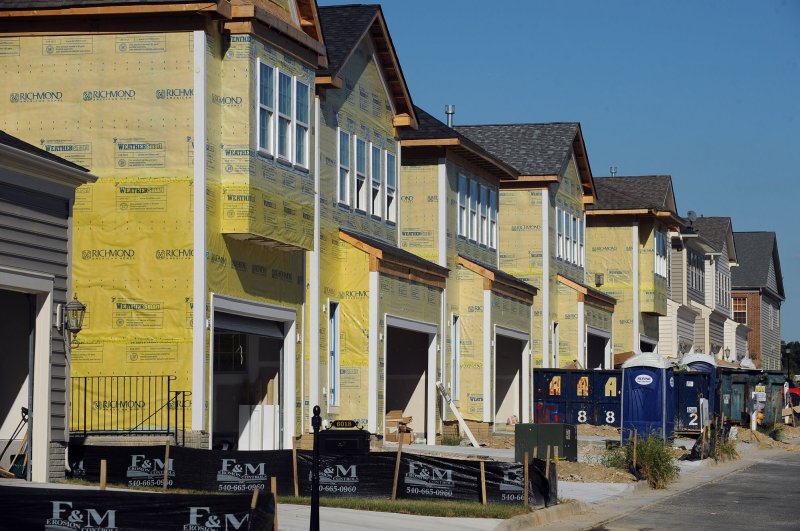
A house and vehicles belonging to the owner of a gas tank that exploded were burned in Akkar, northern Lebanon. Photo by EPA-EFE
BEIRUT, Lebanon, Sept. 2 (UPI) -- Without gasoline, electricity and reliable Internet, covering the news in Lebanon has become a daily struggle for journalists and media institutions.
Lebanon's fuel crisis, which worsened in the past month with a gradual reduction of state subsidies on imports, has severely impacted most sectors. Hospitals, bakeries and businesses have been forced to reduce activities or shut down.
Waiting in long lines at gasoline stations to fill tanks and searching for diesel to power private generators have become daily tasks for most, media outlets and journalists included.
Newspapers, websites and TV and radio stations are exerting tremendous effort to keep operations going and enable journalists to cover developments on the ground.
They are supplying journalists with gas to get to work or to report a story from the field, adjusting their shifts and asking them to work online from home whenever possible.
Their other main concern is securing an interrupted power supply to keep broadcasting, as the state electricity company, Electricite du Liban, is barely able to provide more than 2 to 3 hours of power a day and diesel fuel is becoming scarce.
Nabil Ismail, chief photographer at the leading An Nahar newspaper, has been forced to limit his photo coverage to the most important events.
"We are very much affected by the fuel crisis. We used to tour the streets all day long...not anymore," Ismail told UPI, explaining how he spends long hours most days at the gas station, trying to persuade the station's owner to fill his motorcycle tank by showing his press card or taking photos of a large crowd of motorists cramming the station.
It's worse for journalists trying to fill car gas tanks.
Only the essentials
Up to 60 percent of An Nahar's journalists can no longer work from their offices in downtown Beirut.
"Most of them are now working from their homes, as they have no gasoline to come to work," Ismail said. "Our photo coverage dropped by 50 percent ... myself and the five other photographers are covering only the essential news."
To cover the Aug. 15 explosion of a fuel tank in Tleil in the northern Akkar region, which killed more than 30, Ismail shared a taxi with photographers from three international news agencies. They had to pay 3 million Lebanese pounds (around $150 at the black market rate) for the trip.
Two days ago, only a few journalists and photographers showed up to cover an explosion at a factory in Burj Brajneh in Beirut's southern suburbs that killed four people.
"The situation today is much more difficult than the war times... We didn't face then such a humiliation," Ismail said.
Shafiq Taher, Beirut office director of the London-based Al Araby al Jadeed media outlet, has been trying to ease the pressure on his 50 employees, mostly journalists, by adjusting working shifts, supplying them with UPS (uninterruptible power supply) and battery backups to work from home, sometimes securing some gasoline and even considering a solar solution to power their main office.
"This is all to keep our operations going... but we are unable to cover the events properly with such conditions," Taher told UPI. "So we are obliged to rely on our stringers in the region to send news and photos, but it is not the same ... when our professional reporters and stringers are dispatched from Beirut and handle the coverage themselves."
Stress is not just related to the acute fuel crisis and work problems. Journalists, like most in Lebanon, are suffering from the deteriorating living conditions, spending much time to secure essentials for their family, searching pharmacies and bakeries for medicine and bread, finding ways to help their children overcome the trauma of long hours without electricity.
"Most are depressed, and many asked to be moved to our offices outside Lebanon," Taher said. "At the end, we are all human beings and have responsibilities as parents first."
No time to give up
The New TV television station has managed to maintain its local and satellite broadcast, giving priority to its news and field reporting.
"We are still able to secure that most of our news teams come to the station or go on field reporting," NTV public relations manager Ibrahim Halabi told UPI. "We need gasoline for our cars and diesel fuel for our generators... So far, we are getting the supplies needed from fuel companies and stations we used to deal with."
Halabi said the network is also providing some gasoline for the journalists and reporters who must report daily. Others who work from home have to struggle with severe power cuts and unreliable Internet connections.
"If things get worse, and the government lifts completely the fuel subsidies by the end of September, with the price of 20 liters jumping to more than 300,000 LL as expected, I doubt our employees could afford to pay for gasoline anymore," he said.
Assad Maroun, general manager of the Voice of Lebanon radio station, said it is not the time to give up, despite the country's extremely difficult conditions.
"We are doing everything possible to continue operating and broadcast to all the regions by securing diesel fuel to our transmitting stations and studios, relying on our multi-skills team, with longer shifts and less working days, as well as more in-house coverage," Maroun told UPI.
Ayman Mhanna, executive director of the Beirut-based Samir Kassir Foundation's SKeyes Center for Media and Cultural Freedom, voiced concern over the impact of the crisis on the journalists and their ability to cover news properly.
"Whenever journalists cannot be on the ground, the quality of reporting and the ability to verify facts is reduced," Mhanna told UPI, referring to "very dangerous events taking place across the country" while "the physical presence of journalists is no longer what it was."
He emphasized that it is the duty of the media to inform, and people must have access to information, but "that is at stake" and "something particularly dangerous" with Lebanon heading for general elections next spring.
"People really need high-quality verified journalism to know the truth and so to hold those behind mismanaging the crisis accountable," Mhanna said.










